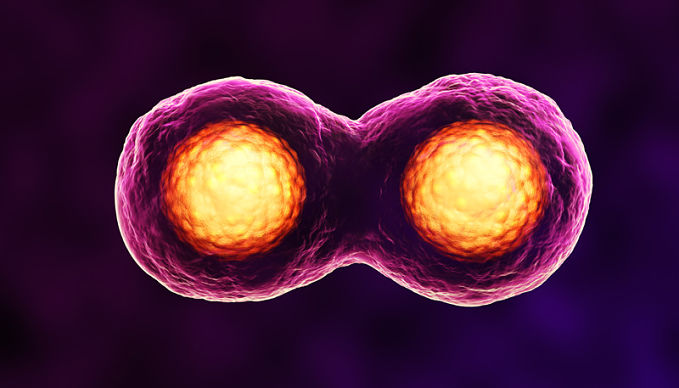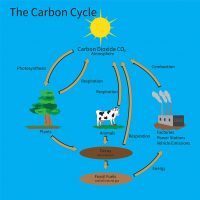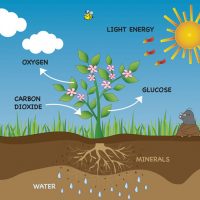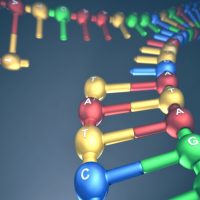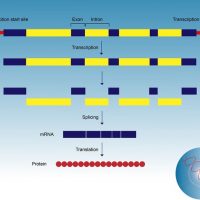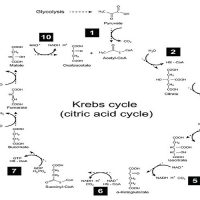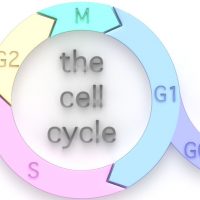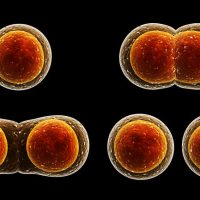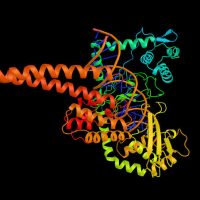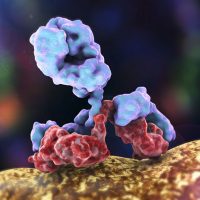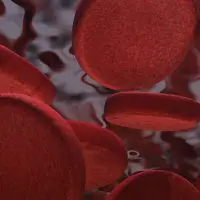What is mitosis? A look at the definition and stages of mitosis.
Cell division is the process by which a single cell divides to form two new daughter cells. Division is necessary to allow multicellular organisms to grow, to repair damaged body parts, and to replace dead cells. The lifespan of the cell includes interphase, in which the cell spends most of its time, mitosis, during which the nucleus divides, and cytokinesis, during which the rest of the cell divides.
During interphase, the cell carries out all of its day-to-day activities and functions. It also undergoes a crucial step as the cell’s DNA duplicates itself in preparation for mitosis.
DNA normally exists in the nucleus in the form of chromatin, a grainy substance. However, the chromatin coils tightly into distinct chromosomes. Because the DNA duplicated in interphase, the chromosomes are X-shaped and double-stranded, where one arm of the X is an identical copy of the other, held together at a region called the centromere. The identical copies are called sister chromatids. This condensed form makes them far easier to sort and separate during mitosis.
What is mitosis?
Mitosis is a multi-phase process during which the nucleus divides. The chromosomes are sorted and separated to ensure that each new daughter cell has a full set of chromosomes.
Mitosis – definition and stages
Mitosis is a multi-phase process during which the nucleus divides. The chromosomes are sorted and separated to ensure that each new daughter cell has a full set of chromosomes.
Phases of mitosis
Mitosis has four phases:
- Prophase.
- Metaphase.
- Anaphase.
- Telophase.
Let’s now take a look at these four stages of mitosis in more detail.
Prophase
The longest phase of mitosis is prophase. The chromatin coils into chromosomes, the nuclear membrane breaks down, the nucleolus disappears, and long, thin microtubule fibres start to form. In animal cells, the spindle fibres form between the centrioles, which move to opposite ends of the cell. Plant cells don’t have centrioles, but they do have spindle fibres that form from organizing centres near the nucleus.
Metaphase
During metaphase, the shortest phase in mitosis, spindle fibres attach to the centromere of each chromosome. They shorten and lengthen until the chromosomes are lined up at the equator or middle of the cell.
Anaphase
Remember that the X-shaped, double-stranded chromosomes are actually two identical copies called chromatids. During anaphase, the spindle fibres shorten, causing the centromeres to divide and the sister chromatids to separate from each other. One sister chromatid goes to each end of the cell, so that by the end of anaphase, each end of the cell has a full set of single-stranded chromosomes.
Telophase
The final phase of mitosis is telophase, and it is essentially the reverse of prophase. The chromosomes uncoil back into chromatin. The spindle fibres break down, nucleoli appear in each new nucleus, and new nuclear membranes reform around each set of chromosomes. At the end of telophase, there are two full nuclei inside one cell.
Cytokinesis
Cytokinesis is the division of the cytoplasm and remaining cell organelles. In animal cells, the cell membrane pinches inward at the middle until two daughter cells are formed. In plant cells, a cell plate forms along the equator, which eventually grows into a cell wall. With cell division complete, the new cells move into interphase. They can now grow and carry out their normal cell functions until they divide again.
What are the stages of mitosis?
The four stages of mitosis are: prophase, metaphase, anaphase, and telophase.

